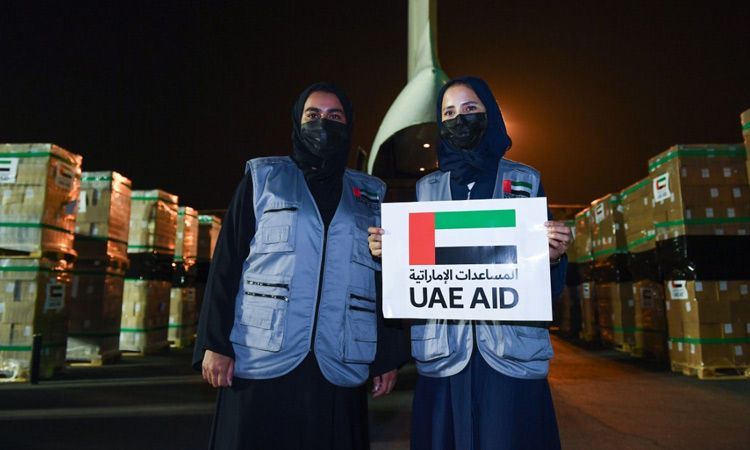UAE Humanitarian Aid has emerged as a significant force in global relief efforts, providing critical support to countries facing crises due to conflicts, natural disasters, or economic hardships. Over the past decades, the United Arab Emirates has established itself as a global leader in humanitarian assistance, combining financial contributions, logistical expertise, and innovative programs to deliver timely aid where it is needed most.
From the Middle East to Africa and Asia, the UAE’s humanitarian initiatives reflect the nation’s commitment to global solidarity, emphasizing compassion, efficiency, and long-term impact. This article explores the UAE Humanitarian Aid landscape, its key initiatives, achievements, and the role it plays in shaping international relief efforts.
Historical Context of UAE Humanitarian Aid
The UAE’s focus on humanitarian aid is deeply rooted in its national philosophy and Islamic values, emphasizing generosity, community support, and global responsibility. Since its formation in 1971, the UAE has steadily expanded its role in international assistance.

- Early Initiatives: In the 1970s and 1980s, the UAE began providing aid to neighboring countries affected by war and natural disasters, establishing a reputation for reliable support.
- Institutionalization: Organizations like the Emirates Red Crescent were established to formalize humanitarian operations, ensuring structured and sustainable interventions.
- Global Outreach: Over the years, the UAE has broadened its reach, responding to crises in Africa, Asia, and beyond, contributing not only funds but also medical aid, food, and infrastructure support.
This long-standing commitment underscores the UAE’s vision of fostering global peace, stability, and human development.
Key UAE Humanitarian Aid Initiatives
The UAE operates numerous programs and initiatives that address immediate needs and contribute to long-term development in affected regions. Some of the most notable efforts include:

1. Emirates Red Crescent (ERC)
The ERC is a flagship humanitarian organization coordinating UAE Humanitarian Aid worldwide. Its activities include:
- Emergency relief in conflict zones
- Disaster response during floods, earthquakes, and famines
- Health programs providing vaccinations, medical supplies, and mobile clinics
- Development projects focused on education, water, and sanitation
2. Humanitarian Aid and Development Sector (HAD)
HAD focuses on sustainable development, linking emergency relief with long-term programs. Key projects include building schools, hospitals, and water infrastructure in developing nations.
3. Food Security Programs
Through initiatives like the UAE Food Bank and international food assistance campaigns, the UAE ensures that vulnerable populations receive essential nutrition during crises.
4. Medical and Health Support
The UAE has sent field hospitals, medical teams, and vaccines to countries in need, including Yemen, Sudan, and Pakistan, ensuring communities have access to essential health services.
5. Education and Capacity Building
Beyond immediate relief, the UAE supports education programs for children affected by conflicts, helping communities rebuild and empowering future generations.
Global Impact of UAE Humanitarian Aid
UAE Humanitarian Aid has made a tangible impact worldwide, with billions of dollars invested and millions of lives affected. Some key achievements include:
- Yemen Crisis: The UAE has provided extensive food, medical, and infrastructure aid, helping millions of displaced people survive and rebuild their lives.
- Horn of Africa: During droughts and famines, the UAE delivered water, food, and emergency supplies to vulnerable populations in Somalia, Ethiopia, and Kenya.
- Asia-Pacific Support: Following natural disasters like earthquakes and floods in Pakistan, Indonesia, and the Philippines, the UAE deployed rapid response teams and essential relief materials.
These initiatives highlight the UAE’s approach of combining immediate humanitarian assistance with long-term development strategies.
UAE Humanitarian Aid and Innovation
Innovation plays a central role in UAE Humanitarian Aid. The country leverages technology, logistics, and strategic partnerships to maximize efficiency and reach.
- Drone Deliveries: The UAE has experimented with drones to deliver medical supplies and vaccines to remote or conflict-affected areas.
- Smart Logistics: Advanced supply chain management ensures that aid reaches the most vulnerable populations quickly and effectively.
- International Partnerships: Collaborations with UN agencies, NGOs, and global governments enhance coordination, avoid duplication, and increase the impact of relief efforts.
By integrating innovation with compassion, the UAE has set new benchmarks in humanitarian aid delivery.
Challenges and Opportunities
Despite its successes, UAE Humanitarian Aid faces challenges common to global relief efforts:
- Access in Conflict Zones: Political instability and security issues can hinder aid delivery.
- Resource Allocation: Balancing immediate relief with long-term development requires careful planning and prioritization.
- Global Competition: Coordinating with multiple international organizations demands efficiency and strong leadership.
However, these challenges also present opportunities: the UAE continues to expand its global influence, refine its strategies, and advocate for humanitarian innovation and collaboration.
The Role of UAE Humanitarian Aid in Diplomacy
Humanitarian aid is not only a tool for relief but also a diplomatic instrument. The UAE leverages its aid programs to:
- Build stronger ties with recipient countries
- Promote regional stability and peace
- Enhance its global image as a compassionate and responsible nation
This strategic use of humanitarian aid has elevated the UAE’s standing in international forums and reinforced its reputation as a proactive and empathetic global partner.

Future of UAE Humanitarian Aid
Looking ahead, UAE Humanitarian Aid is poised to expand its global role:
- Increased Investment: The UAE continues to allocate significant budgets to humanitarian programs, ensuring sustained impact.
- Climate Crisis Response: With natural disasters becoming more frequent, the UAE is investing in disaster resilience and climate adaptation projects.
- Youth Engagement: Programs encouraging young Emiratis to participate in humanitarian missions ensure continuity and fresh perspectives.
- Sustainable Development: The UAE aims to integrate relief efforts with sustainable projects, addressing root causes of poverty and instability.
The future of UAE Humanitarian Aid reflects a vision of compassionate, innovative, and strategic intervention that benefits both recipients and the global community.
Conclusion
UAE Humanitarian Aid has become a beacon of hope in a world facing multiple crises. Through financial contributions, on-ground interventions, and innovative programs, the UAE has proven its commitment to global solidarity and human welfare. From conflict zones in the Middle East to disaster-stricken regions in Africa and Asia, the UAE’s efforts continue to save lives, rebuild communities, and inspire global cooperation.
By combining compassion, strategic planning, and international partnerships, UAE Humanitarian Aid not only addresses immediate needs but also fosters sustainable development and long-term stability. As the world faces growing humanitarian challenges, the UAE’s role as a leader in global aid efforts becomes increasingly vital, embodying the nation’s values of generosity, responsibility, and resilience.
Do follow UAE Stories on Instagram
Read More: Explore Dubai Local Market: Hidden Gems & Best Buys














